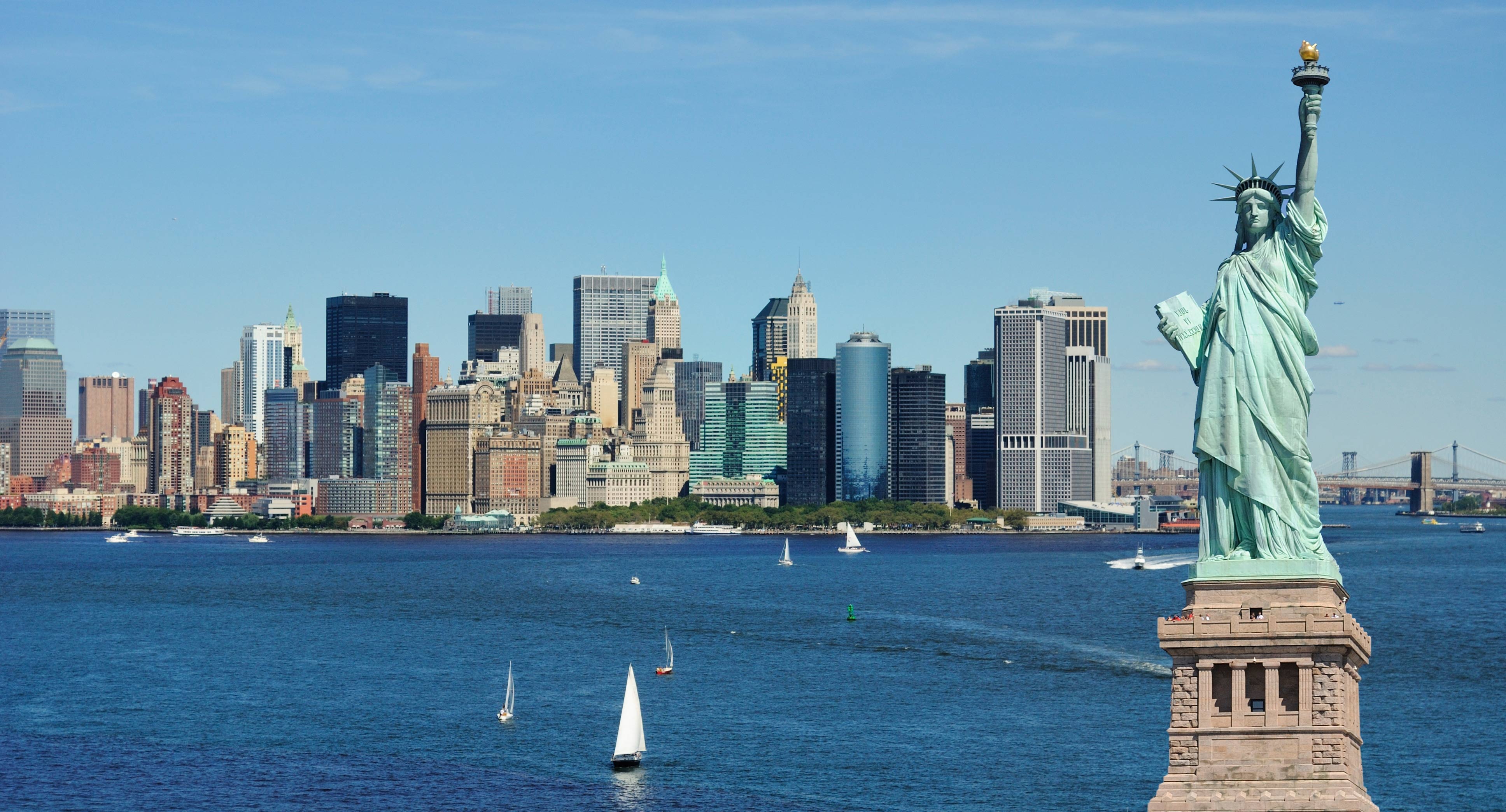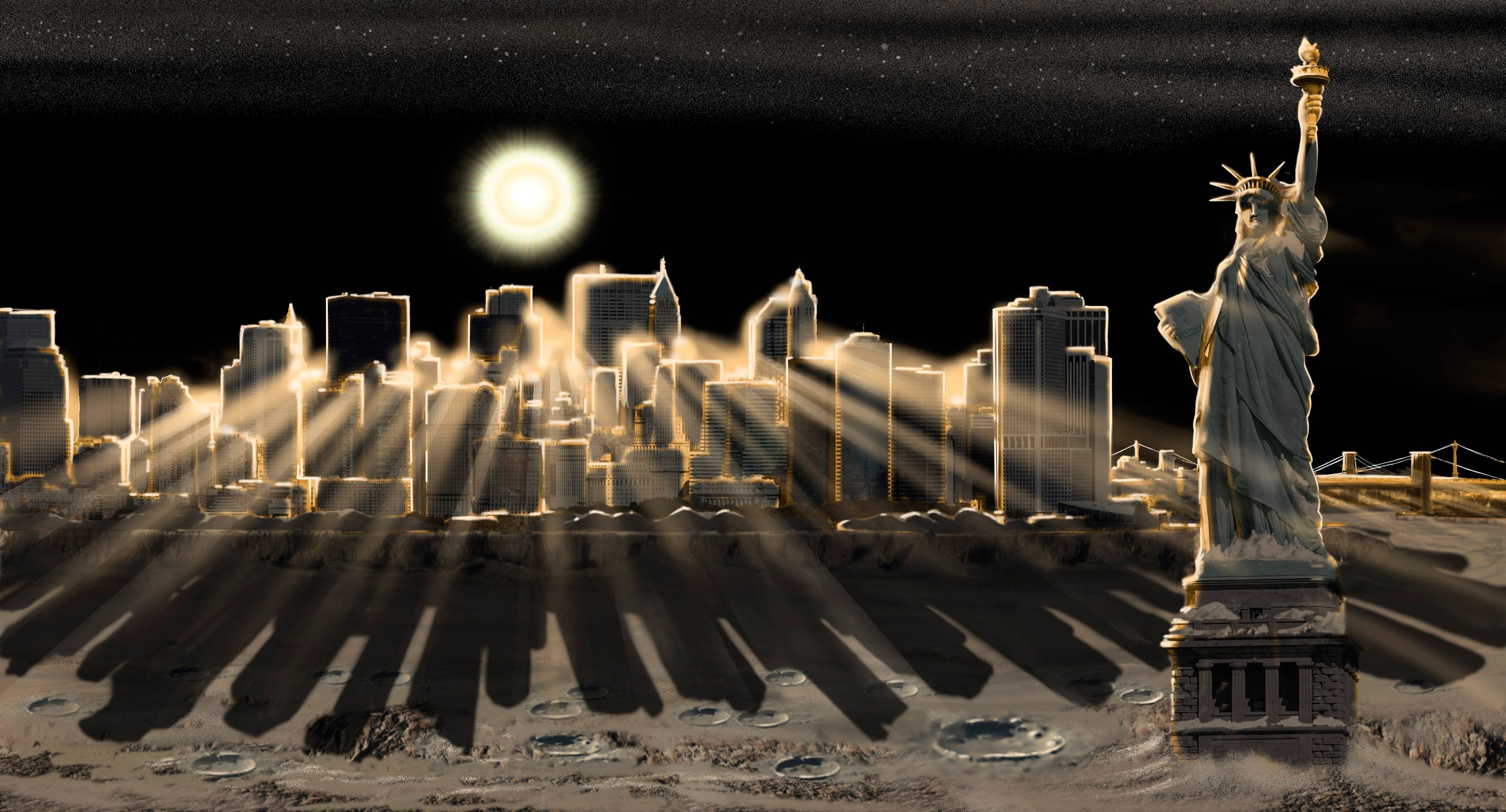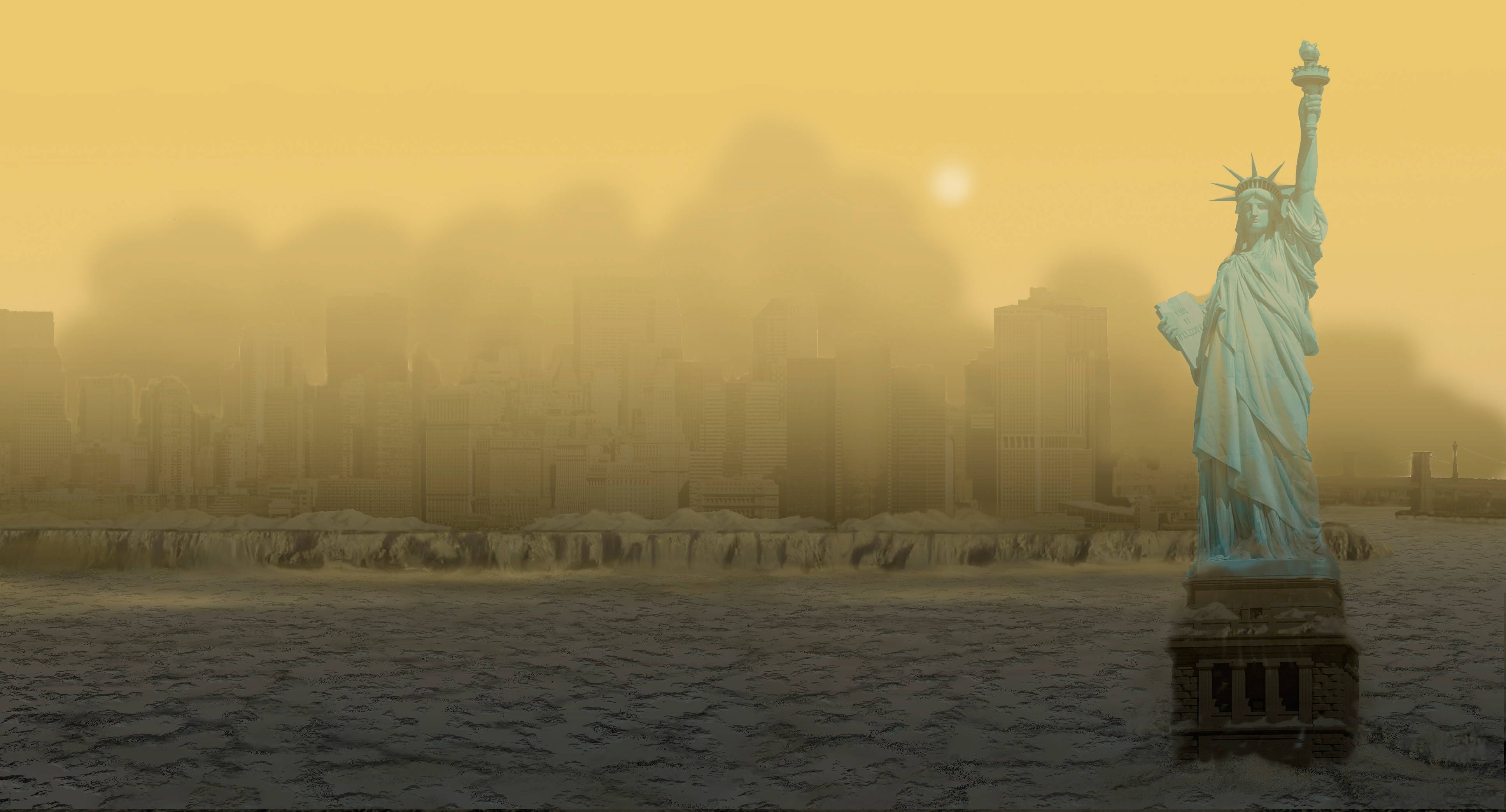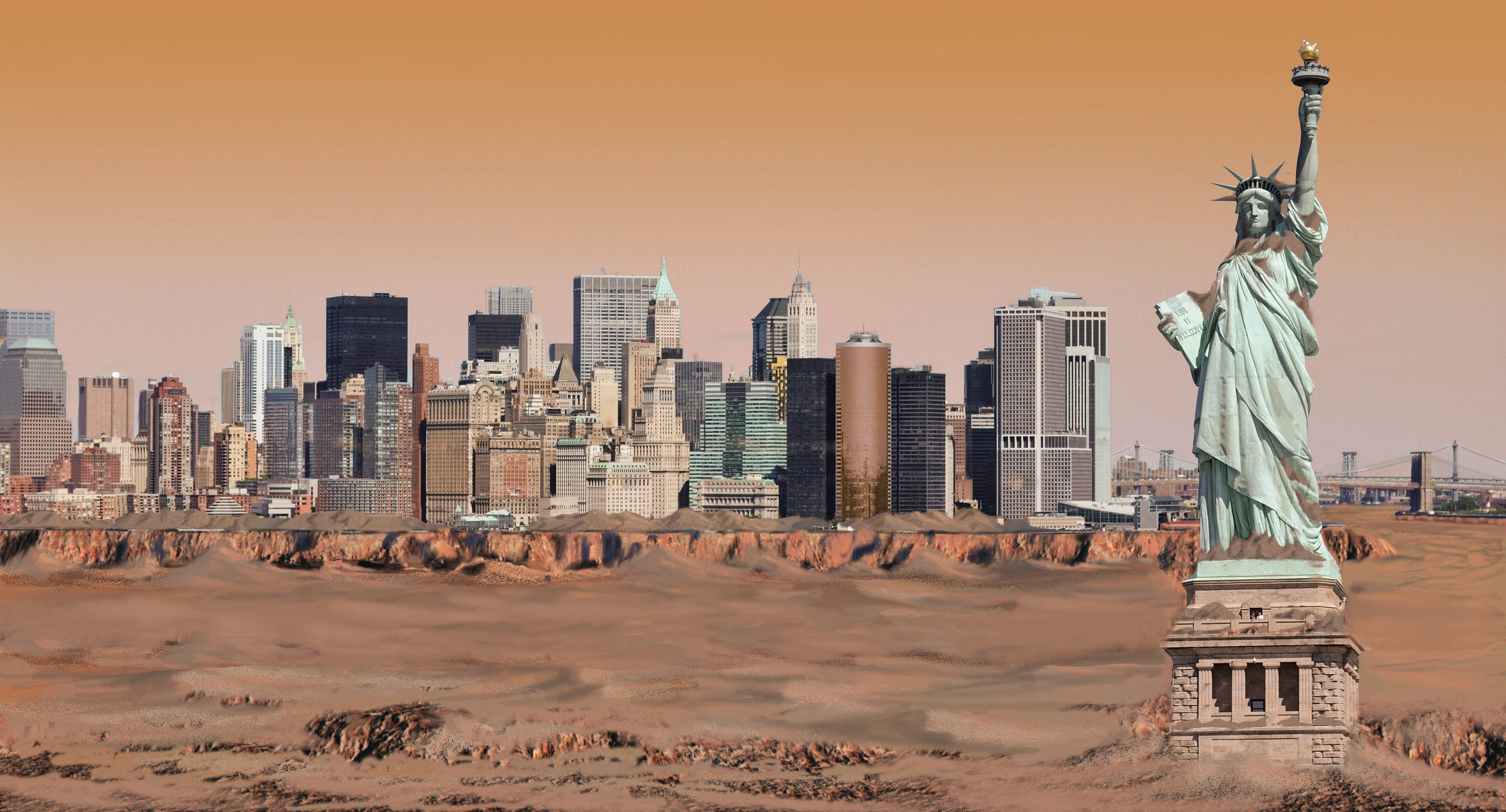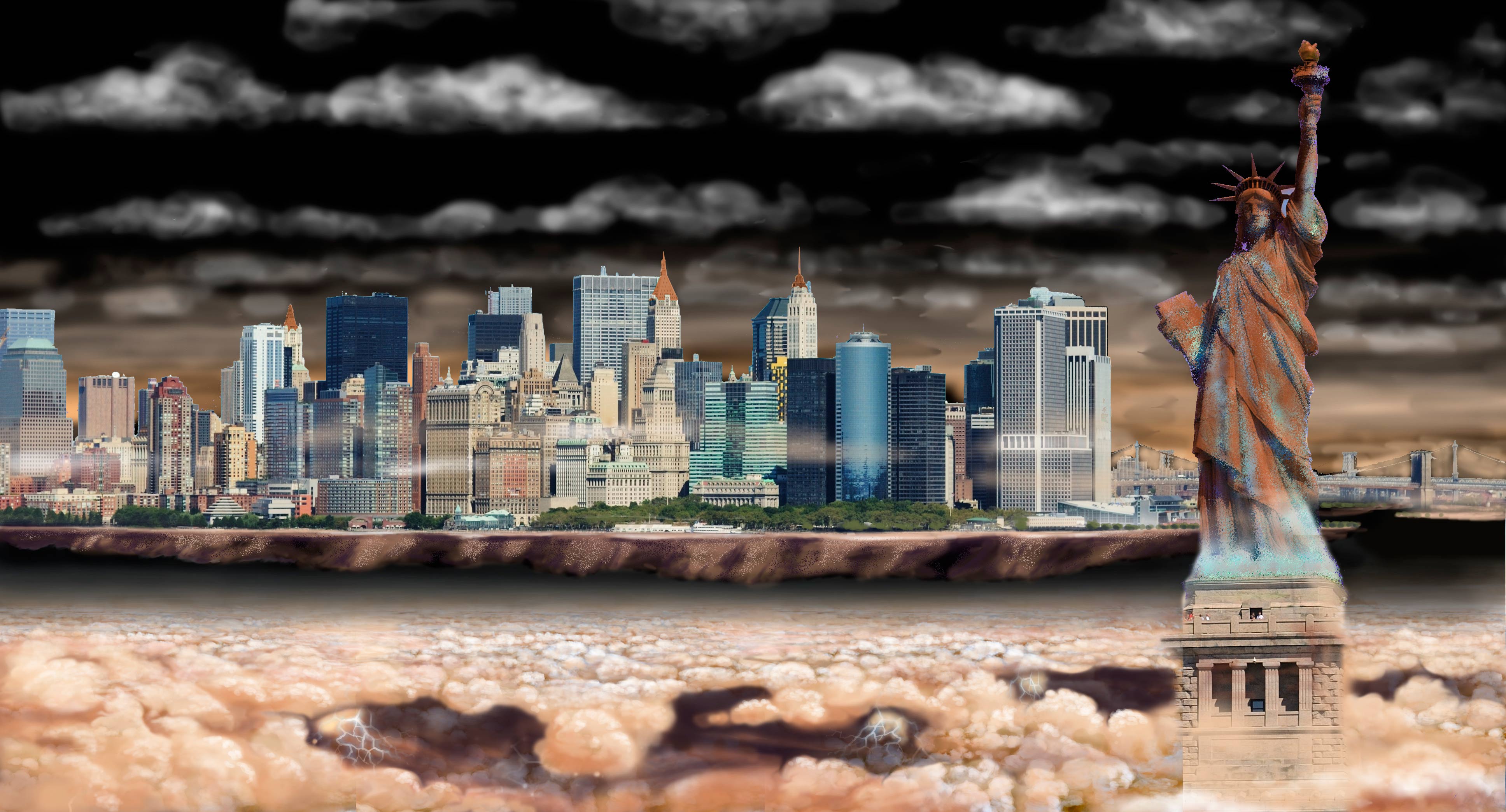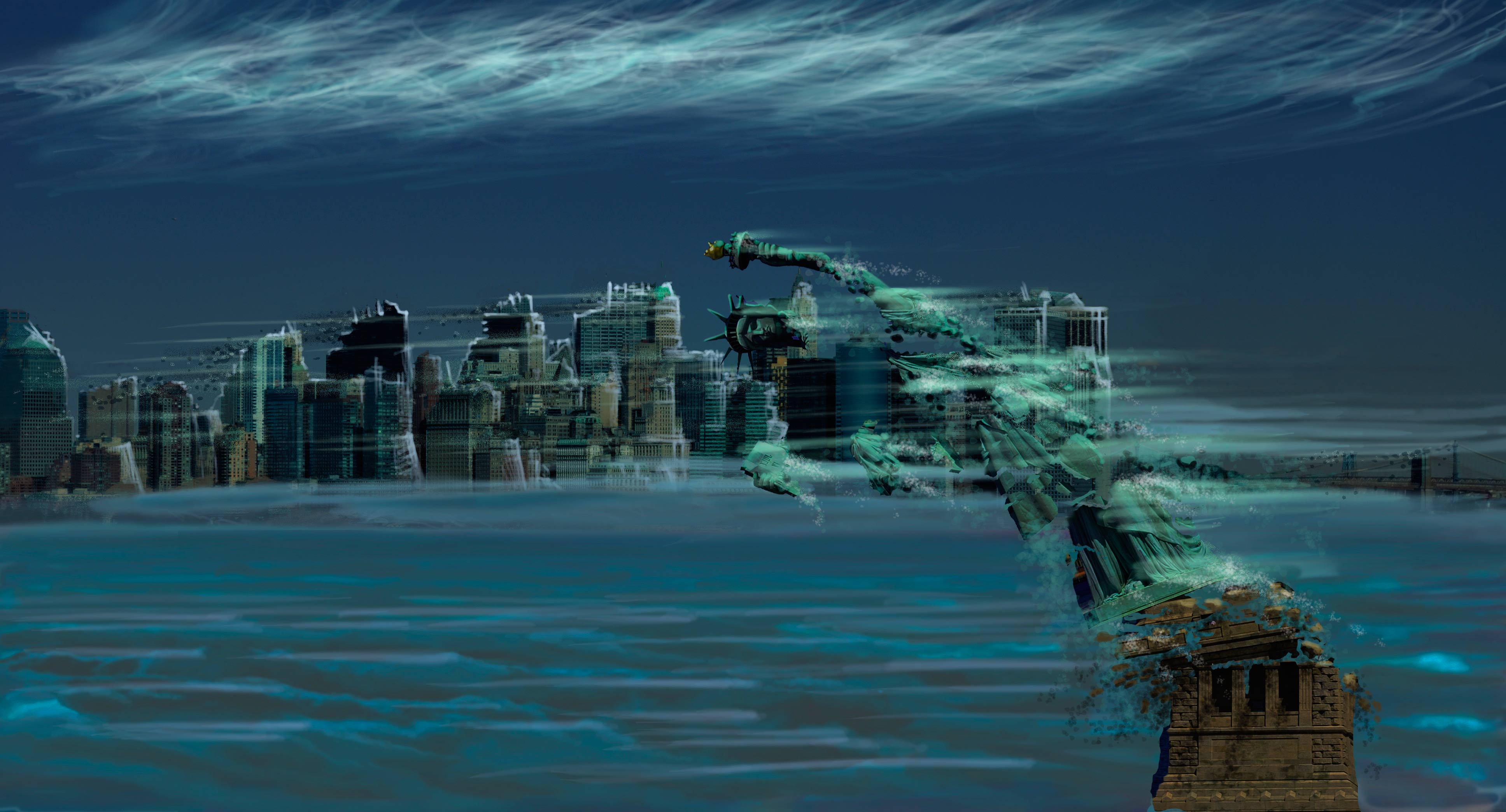How NYC Would Look on Other Planets (Gallery)
New York City Through Earth's Atmosphere
New York City as we're all familiar with it, framed by Earth's characteristic blue sky. [Read the Full Story.]
If New York City Were on Mercury
How New York City would like to an observer on sun-scorched Mercury, whose wispy atmosphere is almost completely transparent. [Read the Full Story.]
New York City Seen Through Venus' Air
Venus' thick atmosphere is dominated by CO2 with clouds of sulfuric acid, creating a yellowish envelope of hot, sulfurous air that would obscure New York's skyline, as well as the sun. [Read the Full Story.]
New York City Seen Through Mars' Atmosphere
If New York City were on Mars, its famous skyline would be coated with red dust, which also tinges the planet's thin, CO2-dominated atmosphere. [Read the Full Story.]
New York City Floating in Jupiter's Air
Hydrogen and helium gas condense into liquid and even metallic form near the base of Jupiter's huge, thick atmosphere. New York City is depicted floating at around 62 miles above this liquid layer, in a region of clear gaseous hydrogen with clouds of water vapor, ammonia and sulfurous gases. The area has a reducing chemistry that would eat away at the Statue of Liberty and other metal objects. [Read the Full Story.]
New York City Seen Through Saturn's Air
Saturn's atmosphere is similar to that of Jupiter. Again, NYC is shown at about 62 miles above a layer of liquid hydrogen and helium, amid clouds of ammonia ice with occasional thunderstorms. As with Jupiter, atmospheric gases are highly reducing and would slowly dissolve any metal oxide surface, like the green patina that covers the Statue of Liberty. [Read the Full Story.]
New York City Seen Through Uranus' Frigid Air
Frigid Uranus rotates perpendicular to the plane of its orbit. At some latitudes it has winds that are stronger than the most powerful hurricanes on Earth and would thus wipe out structures like the Statue of Liberty. The planet's hydrogen-helium atmosphere has a considerable fraction of methane, giving the air an aquamarine tint. [Read the Full Story.]
Breaking space news, the latest updates on rocket launches, skywatching events and more!
New York City Destroyed by Neptune's Winds
Distant Neptune is the solar system's outermost non-dwarf planet and thus the darkest, with a hydrogen-helium atmosphere whose traces of ammonia and water give it a blue tint. Neptune experiences extreme winds that would destroy buildings and other structures. [Read the Full Story.]

Michael Wall is a Senior Space Writer with Space.com and joined the team in 2010. He primarily covers exoplanets, spaceflight and military space, but has been known to dabble in the space art beat. His book about the search for alien life, "Out There," was published on Nov. 13, 2018. Before becoming a science writer, Michael worked as a herpetologist and wildlife biologist. He has a Ph.D. in evolutionary biology from the University of Sydney, Australia, a bachelor's degree from the University of Arizona, and a graduate certificate in science writing from the University of California, Santa Cruz. To find out what his latest project is, you can follow Michael on Twitter.
